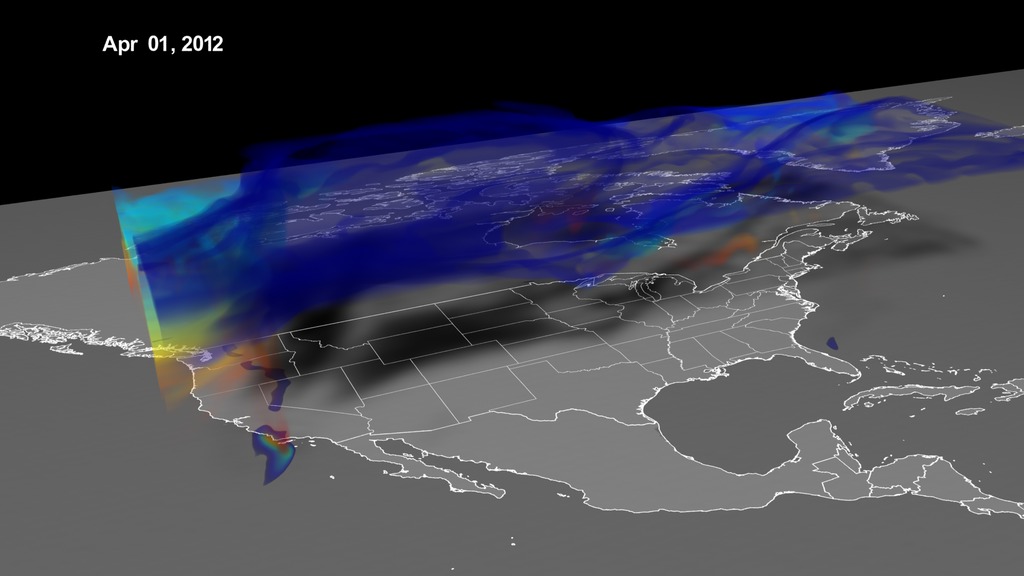Falling Sky
At high altitudes, ozone—a chemical made up of three oxygen atoms—naturally forms a protective layer around the planet that helps shield Earth from the sun’s harmful ultraviolet rays. But near the surface, the same chemical is a man-made pollutant that can cause respiratory distress. Sometimes air from the upper atmosphere descends to lower altitudes, transporting ozone with it. Such events, known as stratospheric ozone intrusions, may lead to unexpected spikes in ozone levels within populated areas. The mysterious events often take place over elevated terrain in mountainous states like Colorado, Nevada and California. In April 2012, curtains of ozone plunged from the upper atmosphere and covered parts of the western United States. Using a high-resolution model, NASA scientists simulated the event, showing where high concentrations of ozone made contact with the ground. Watch the video to see the event unfold.

Ozone descends to Earth’s surface, with consequences for air quality.
This simulation shows the movement of ozone from the upper atmosphere (blue) to ground level (red) in early April 2012.

An ozone intrusion touched down in Nevada and southern California on April 1.

On April 3, the intrusion continued across the southwestern U.S. and northern Mexico.

On April 6, another intrusion touched down over Colorado, California and Arizona.

By April 8, the atmosphere returned to normal, and ozone intrusions ceased.
For More Information
See NASA.gov
Credits
Please give credit for this item to:
NASA's Scientific Visualization Studio
-
Animator
- Trent L. Schindler (USRA)
-
Producer
- Alison Schuyler Ogden (NASA/GSFC)
-
Scientists
- Jon Eric Neilson (SSAI)
- Steven Pawson (NASA/GSFC)
-
Writer
- Kathryn Hansen (Wyle Information Systems)
Release date
This page was originally published on Tuesday, May 6, 2014.
This page was last updated on Wednesday, May 3, 2023 at 1:50 PM EDT.
